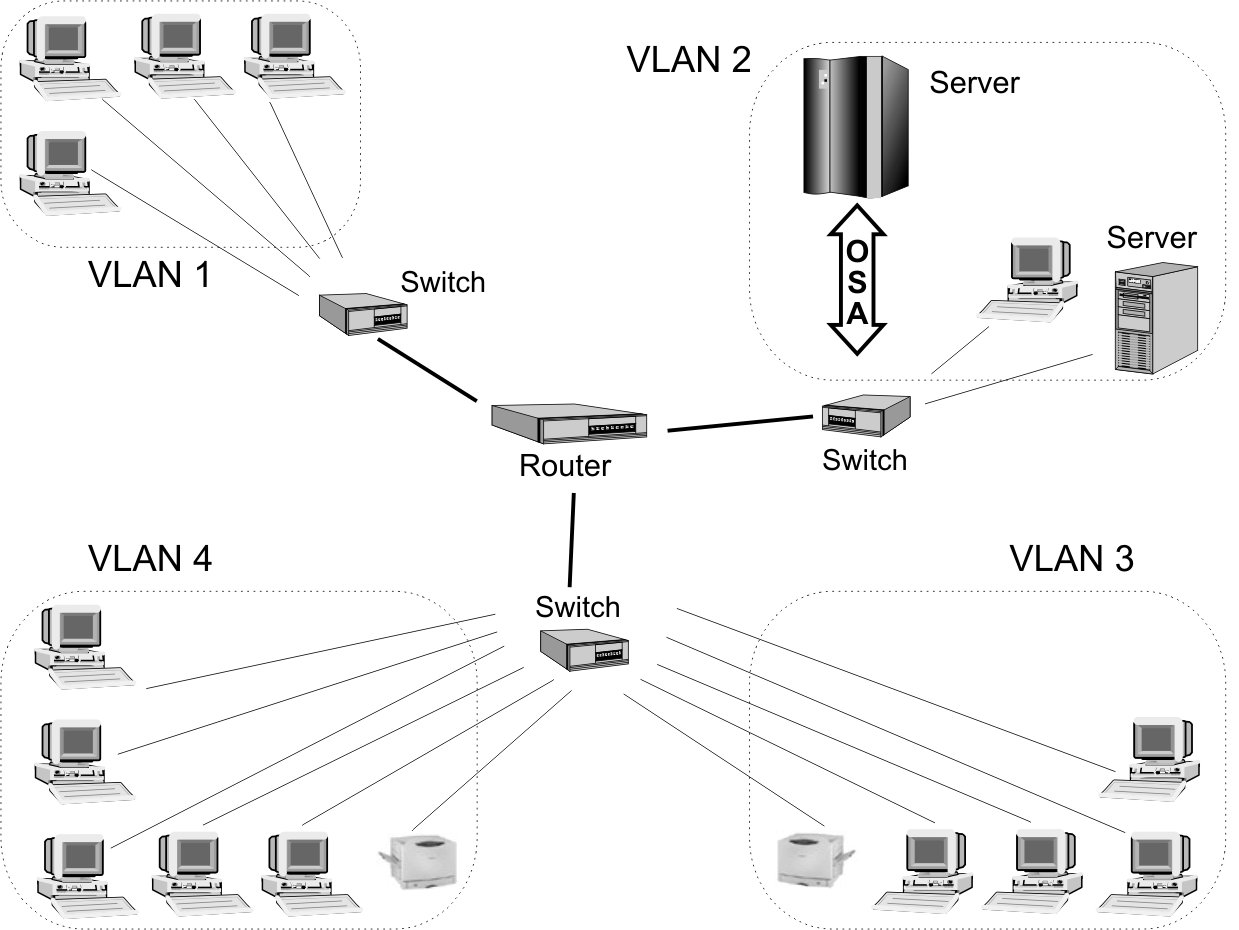Virtual LAN (VLAN) support
All OSA-Express features running QDIO support Virtual Local Area Networks (VLANs) as described in IEEE standards 802.1p and 802.1Q.
VLANs increase traffic flow and reduce overhead by allowing you to organize your network by traffic patterns rather than by physical location. In a conventional network topology, such as that shown in Figure 1, devices communicate across LAN segments to different broadcast domains using routers. Although routers add latency by delaying transmission of data while using more of the data packet to determine destinations, they are preferable to building a single broadcast domain, which could more easily be flooded with traffic.

By organizing the network into VLANs through the use of Ethernet switches, distinct broadcast domains can be maintained without the latency introduced by multiple routers. As Figure 2 shows, a single router can provide the interfaces for all VLANs that appeared as separate LAN segments in Figure 1.

Figure 3 shows how VLANs can be organized logically, according to traffic flow, rather than being restricted by physical location. If workstations 1–3 communicate mainly with the small server, VLANs can be used to organize only these devices in a single broadcast domain that keeps broadcast traffic within the group. This reduces traffic both inside the domain and outside, on the rest of the network.

See z/OS V2R2.0 Communications Server: IP Configuration Guide for more information. See the latest SUSE and Red Hat Linux on z Systems Device Drivers, Features, and Commands manuals for configuration information.